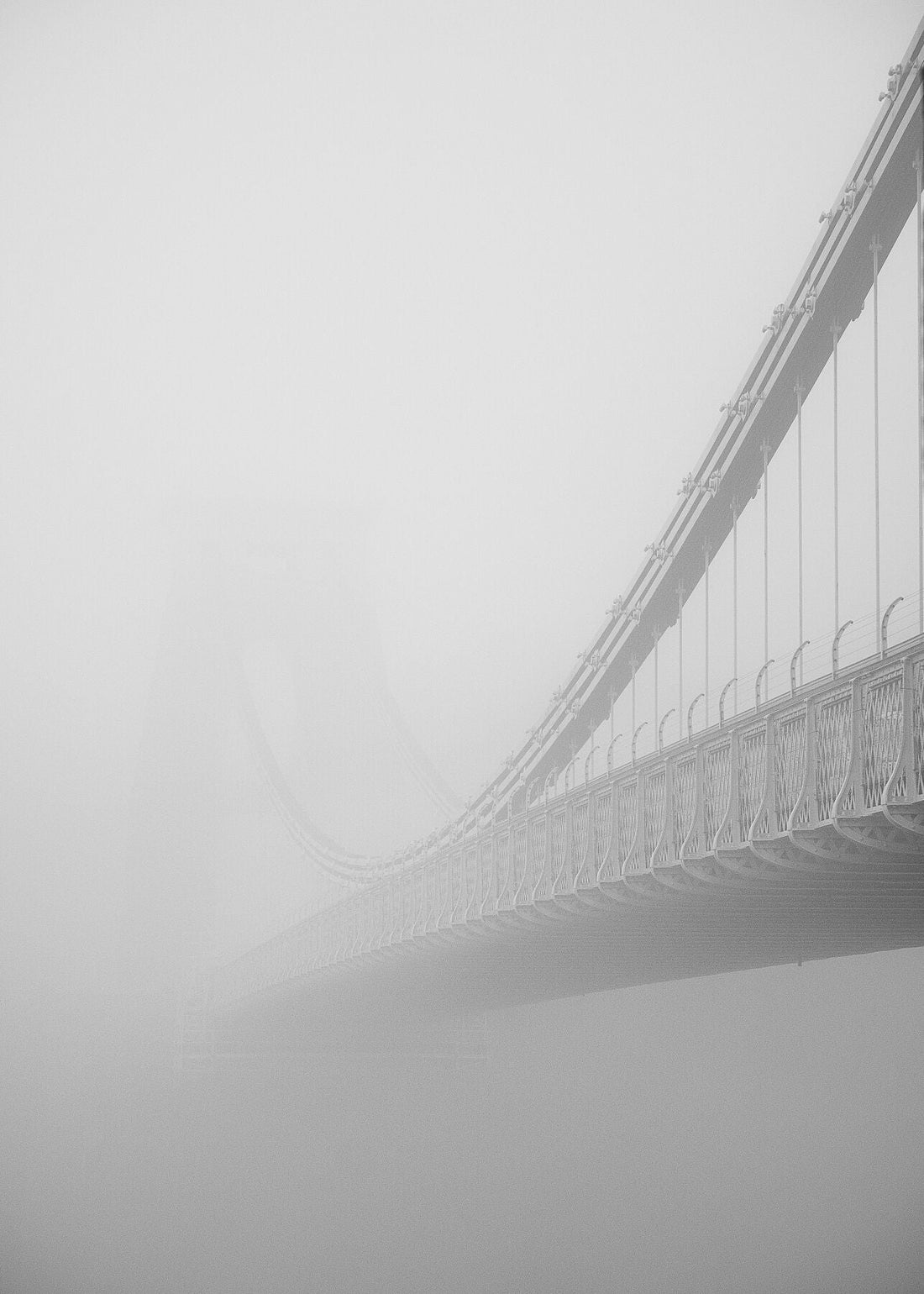
Suspension Bridges in the Mist: A Timeless Muse for Artists
Share

Touching the void’ Andrew Jones
The allure of suspension bridges draped in mist captures not only my imagination, but that of most people lucky enough to live in an area where a suspension bridge punctuates the landscape. These stunning structures, shrouded in mystery, evoke a potent mix of human ingenuity and natural wonder. The interplay of light, architecture, and a misty atmosphere creates scenes that are not only visually striking but also rich with symbolic meaning. But, why are artists so often drawn to depict these ethereal landscapes and explore some captivating examples in art.
The Aesthetic Appeal
From a visual perspective, suspension bridges enveloped in mist present an intriguing balance between solidity and intangibility. The geometric precision of the steel cables and towers contrasts beautifully with the soft, dreamlike quality of the mist. This interplay is an irresistible challenge for artists seeking to explore the tension between clarity and obscurity.
Take, for example, the iconic photographs of the Golden Gate Bridge in San Francisco. Known for his mastery of light and shadow, Ansel Adams often used the bridge as a subject in his work. In his piece, "Golden Gate Before the Bridge," the incoming storm over the bay hints at the coming structure, allowing viewers to contemplate the approaching change while leaving everything to the imagination. So in this case, the complete absence of the bridge was non the less alluring!

The Symbolism of Suspension Bridges
Suspension bridges can be more than just architectural marvels—they are often perceived as powerful symbols of connection, progress, and human ambition. When shrouded in mist, they take on an almost mythical quality, inviting interpretations that go beyond their physical form. Artists are naturally drawn to this duality: the bridge becomes a metaphor for life's uncertainties, transitions, and the interplay of known and unknown.

Rain Steam and Speed. JMW Turner
A great example of this can be found in the work of British painter J.M.W. Turner, who often depicted bridges in misty or turbulent conditions. While not explicitly focused on suspension bridges (they were less common during his era), Turner's works, such as 'Rain, Steam, and Speed', convey a similar atmospheric intensity. Modern painters and illustrators frequently channel this Turner-esque mood when portraying contemporary suspension bridges like the Brooklyn Bridge, Tower Bridge and Clifton Suspension Bridge shrouded in fog.
A Sense of Place and Storytelling
For many artists, suspension bridges in mist create a vivid sense of place and drama. These scenes are ripe with storytelling potential, suggesting themes of exploration, isolation, or the journey into the unknown. A misty bridge invites viewers to imagine the world beyond—the hidden city, the untold adventures, the possibilities on the other side.
In photography, Hiroshi Sugimoto's minimalist works evoke this narrative quality. His *Seascapes* series is not about bridges specifically, but it shares the same spirit of blending natural and human-made elements with atmospheric effects.
Similarly, works by painters like Georgia O’Keeffe, who found inspiration in natural forms and modern structures, often highlight this kind of juxtaposition. When her aesthetic is applied to bridges, it emphasizes both their engineering brilliance and their capacity to evoke emotion.
Capturing the Scene as a Photographer

Clifton suspension bridge on a foggy morning during covid. Andrew Jones
As Photographers we often try to replicate this poetic atmosphere in our own work and for that reason timing and perspective are both important. Early mornings or evenings, when mist is most likely to roll in, offer optimal conditions, in the case of Clifton’s bridge mornings often prove best. Wide-angle lenses help emphasise the vastness and scale of the bridge, although telephoto lenses can be equally effective to isolate details like the curve of a cable or the glint of dew on the structure.
Think about experimenting with long exposures to soften the mist and create a painterly quality. Alternatively, silhouette shots against a brightening sky can show the bridge's dramatic outlines. Be sure to study how natural light interacts with the scene—it’s often these subtle shifts that elevate a photograph from good to unforgettable
Conclusion
Suspension bridges in mist hold an enduring fascination for artists because they are more than just visual spectacles. Their combination of elegance, engineering, and mystery resonates deeply with our human desire to explore and connect. Whether through photography, painting, or illustration, artists continue to find inspiration in these scenes, capturing their transient beauty for generations to admire.
